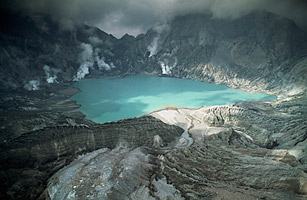
When Mount Pinatubo erupted in 1991, the amount of sulfuric ash it sent into the stratosphere cooled global ground temperatures by 1°F for the next two years. To be fair, it hadn't erupted for six centuries, so there was some catching up to do. A year before the eruption, a 7.8-magnitude earthquake struck about 60 miles northeast of Pinatubo, causing landslides and an increase in steam emissions from one of the volcano's geothermal areas, ultimately setting the stage for the 1991 explosion. While the eruption resulted in more than 700 deaths, many scientists predicted the explosion, thus saving the lives of an estimated 5,000. Still, the eruption produced one of the most dramatic environmental scenes ever witnessed. With ash that rose 22 miles into the sky, it is considered the second largest volcanic eruption of the 20th century.